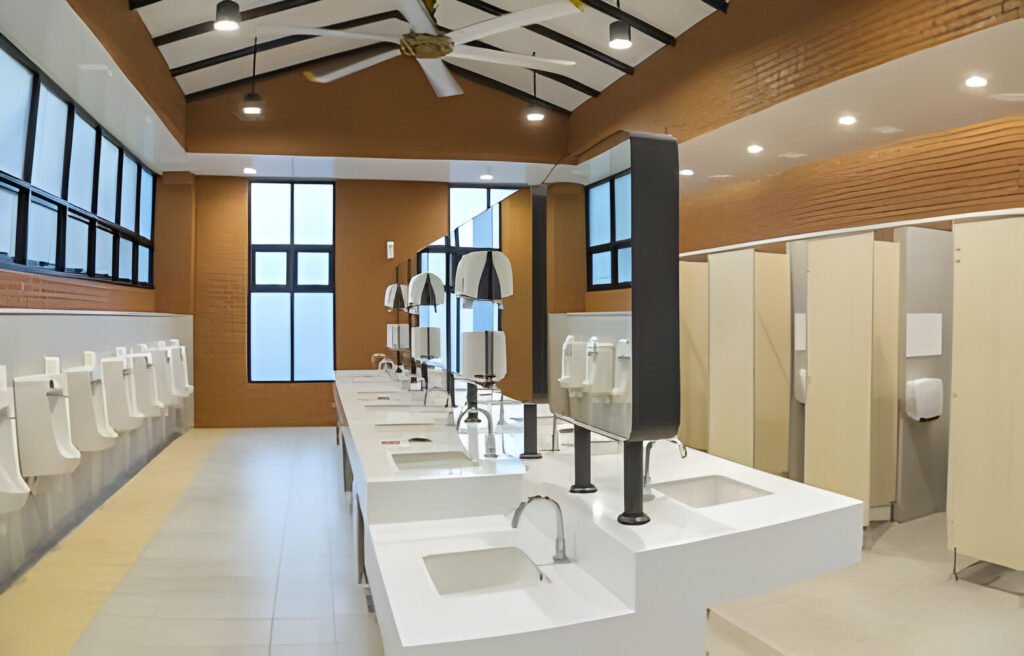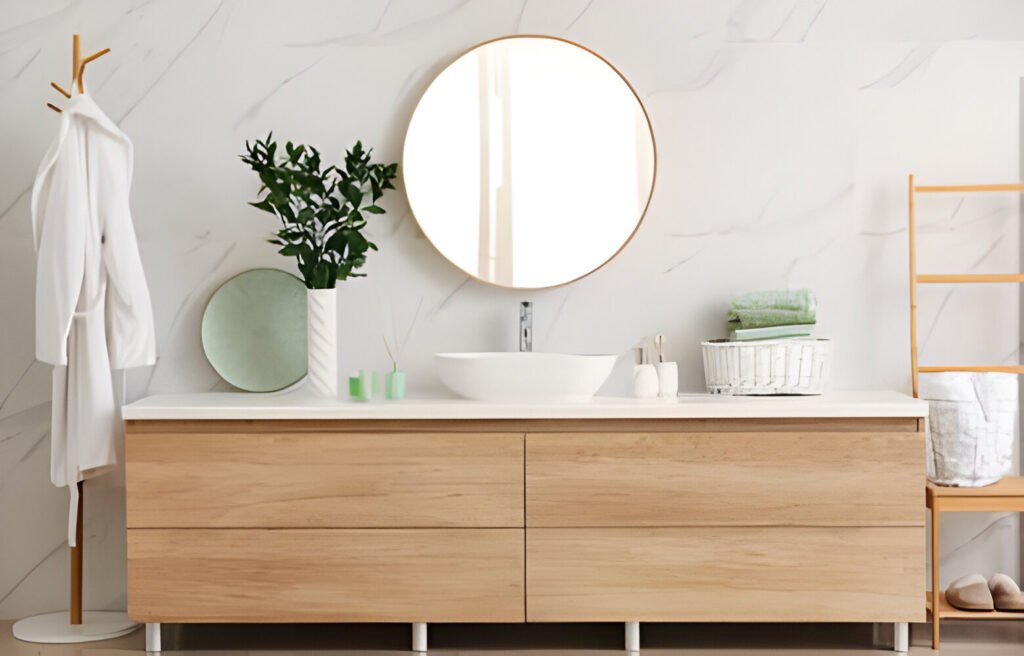We cannot forget how the COVID-19 virus posed a serious threat to the health of people. Most importantly, it taught us the importance of hygiene practices when coworking in corporate offices or commercial places. The pandemic is a reminder that it is essential to take precautions when we are in this kind of environment.
And as the world changed with COVID-19, we became more aware of what is happening in shared spaces and are also changing the way we interact with restrooms. Especially in the corporate world, where a lot of people don’t like going to office restrooms. This is because they are not prepared to see how dirty it is and thus feel discouraged from using them at all.
In the past, corporate restrooms were designed for the “average” person. But with the new normal, there are many employees who would only use a restroom if equipped with certain facilities. It has become more than important to include washroom design ideas that meet their hygiene needs beyond basic.
In order to prepare washrooms for the new normal, there are a few things that every corporate business or firm should be doing. And this is not only to keep restrooms clean but also to keep employees happy. If corporations follow these best practices in restrooms, they will be able to provide a cleaner and more welcoming space for employees who work day and night!
This blog offers a list of trends in corporate washroom ideas and how they can be used to make restrooms more inclusive considering the demands introduced after Covid-19.
8 Common Restroom Issues to Watch Out for After Covid-19
- Adequate ventilation in restrooms is an important factor. There should be a flow of natural air at all times, even after closing the washroom door. One should be able to breathe comfortably while being there.
- Disinfectants that contain ethyl alcohol should be used on the toilet seat to prevent bacteria & germs.
- Easy automatic flush should be installed in toilets for user-friendliness and ease-of-use.
- A janitor or supervisor should be easily reachable in case a toilet needs urgent cleaning.
- Use of hand sanitizer must be promoted for employees each time they visit the restroom.
- Workers should be advised to avoid the use of mobile phones in the restroom.
- Unnecessary articles like laptop bags, water bottles, handbags, and electronic accessories must be left outside restrooms.
- Employees must be made aware of office bathroom etiquettes for utilising these facilities mindfully.
6 Office Restroom Changes You Should Implement Today
The use of office spaces has changed a lot in light of the new normal. As a result, the typical office restroom needs to be revamped with new bathroom interior design ideas. The following six pieces of advice are meant to help you with your office restroom changes:
Go-To Janitor
In the past, restrooms were usually cleaned once a day or between shifts. Now, many corporate businesses hire janitors to clean washrooms thoroughly all day long. We would also say that many employers want their workers to see the restrooms being cleaned during the day. This makes people less worried about how clean the bathrooms are.
Touchless Soap Dispensers
Push-button soap dispensers have become almost obsolete in washrooms. Infrared touchless sensor systems have taken the place of these. Also likely to go away very soon are soap dispensers that have to be filled by hand. When soap dispensers are filled by hand, germs can easily transfer. They should be replaced with soap dispensers that use cartridges, this will also help you get rid of any messy situations in the washroom..
Limited Fixtures
This may sound absurd at first but you should keep the number of toilets, sinks, and urinals in restrooms at minimal. The goal is for fewer people to be in the bathroom at the same time. Users will not overcrowd the space, as well as there would be less discussions in a washroom with limited stalls. Corporations should make sure to keep the manpower ratio in mind when implementing this technique.
Better Urinal Partitions
The trend has been to get rid of the walls that separate urinals. As per the new normal, this will be completely turned around in the men’s room. One should put up more walls offering necessary coverage to ensure minimal or no contact. Some offices have even installed fully enclosed stalls, like they do for toilets.
Checklist on Doors
Under the new normal, there are “checklist sheets” at the back of all office washroom doors. These show who cleaned the bathroom last and when. Employees expect these to be pasted timely in the restrooms so that everyone can be aware of the cleaning schedule. This ensures organisation of information for the cleaning supervisor and if in case of any misses, the defaulter can be easily tracked.
These might also include ATP readings to show that the bathroom has been tested scientifically to make sure it is safe to use. These monitors can’t tell for sure if a surface has pathogens on it, but a high-reading means that there is a good chance they may be there!
Limited Use of Steel
Most of the things in restrooms, like fixtures, latches, and other items, are made of steel. Copper that has been polished should take their place as it is a natural antimicrobial. Bill Keevil, a microbiologist at the University of Southampton, says, “When a pathogen lands on copper, ions blast it like an onslaught of missiles, stopping the cell from breathing and making holes in the cell membrane.”
Conclusion
In the coming years, we can expect more changes to restrooms. When it comes to restrooms, the “New Normal” is not the end. Expect more changes in the future as we learn more about the Covid-19 virus and its constantly evolving variants.






